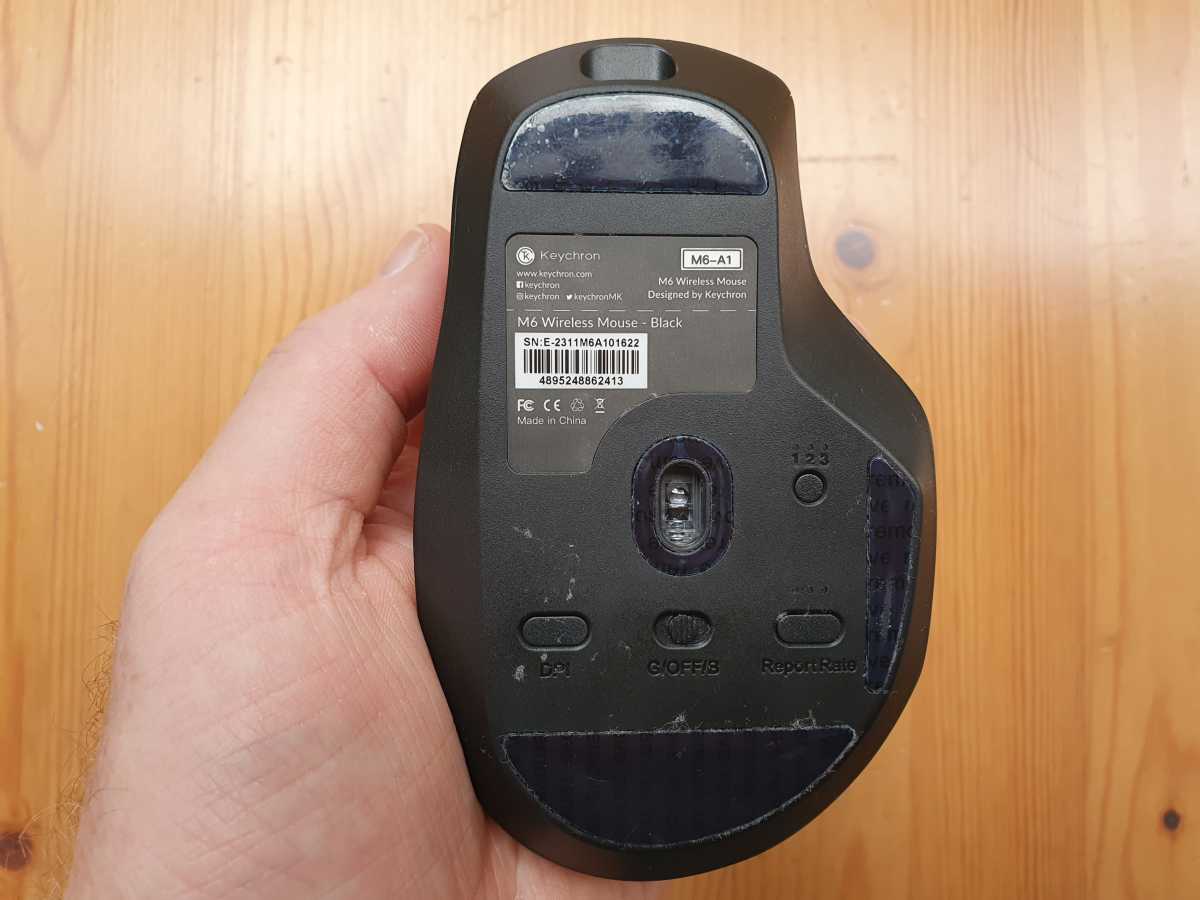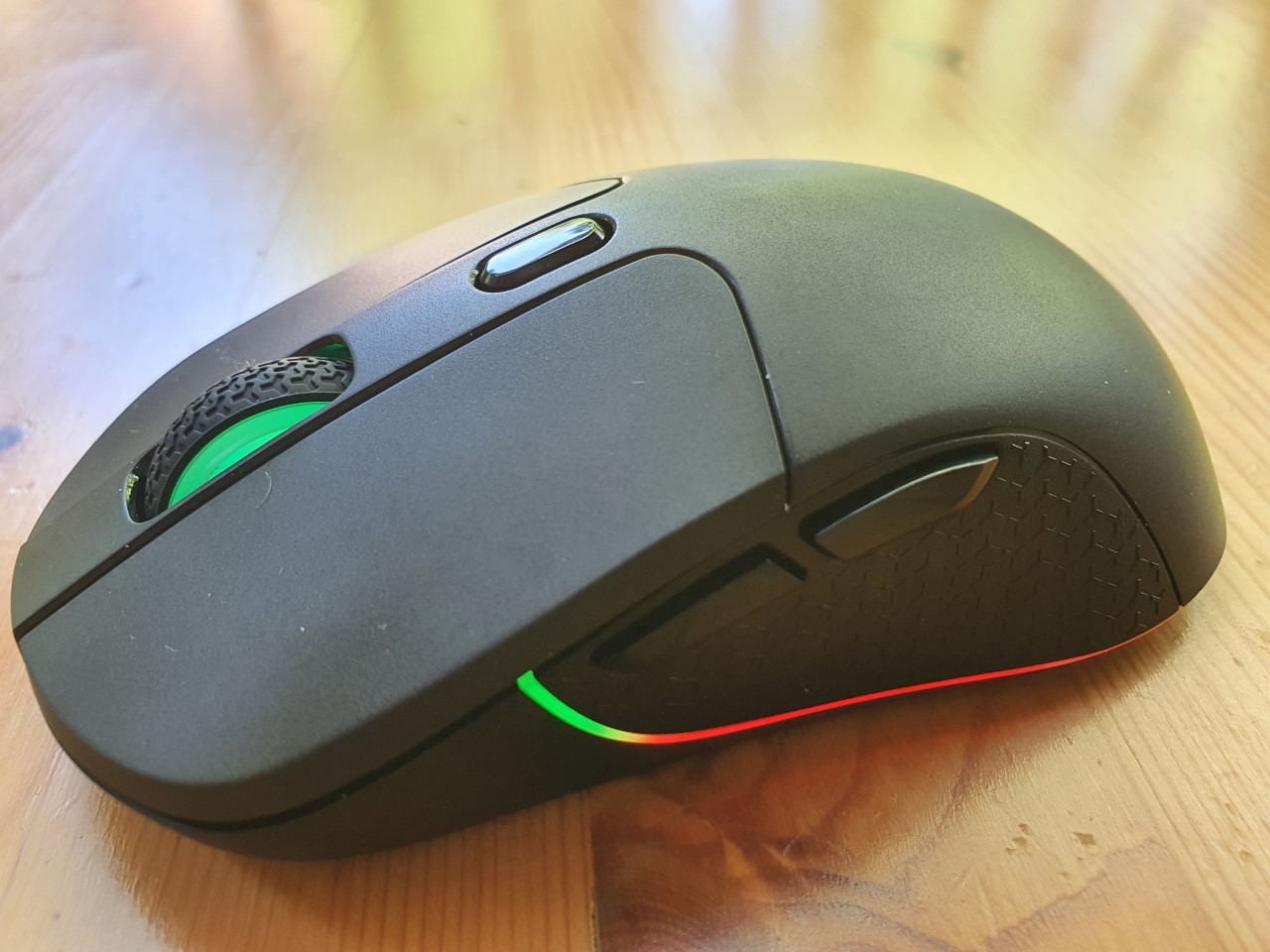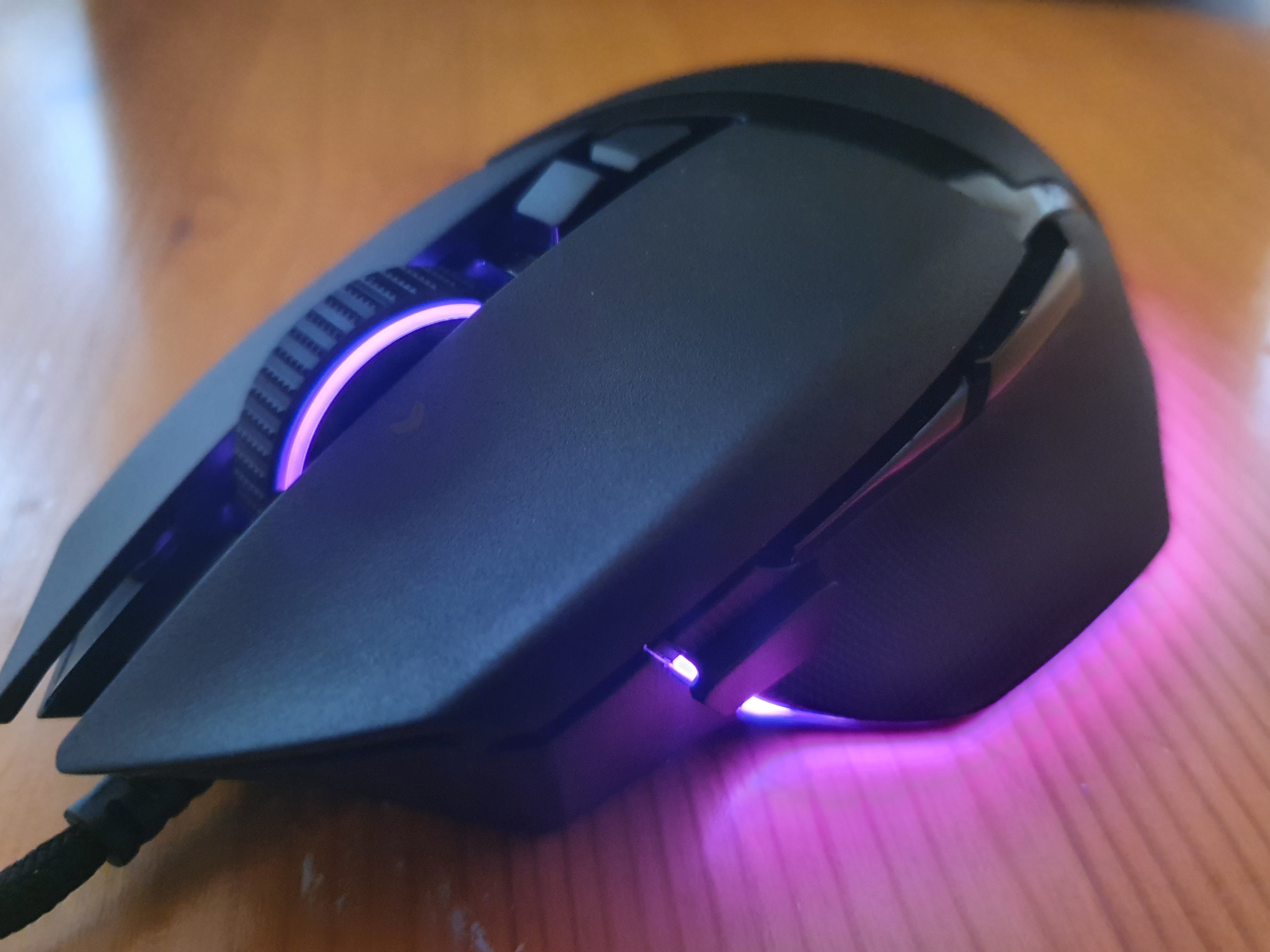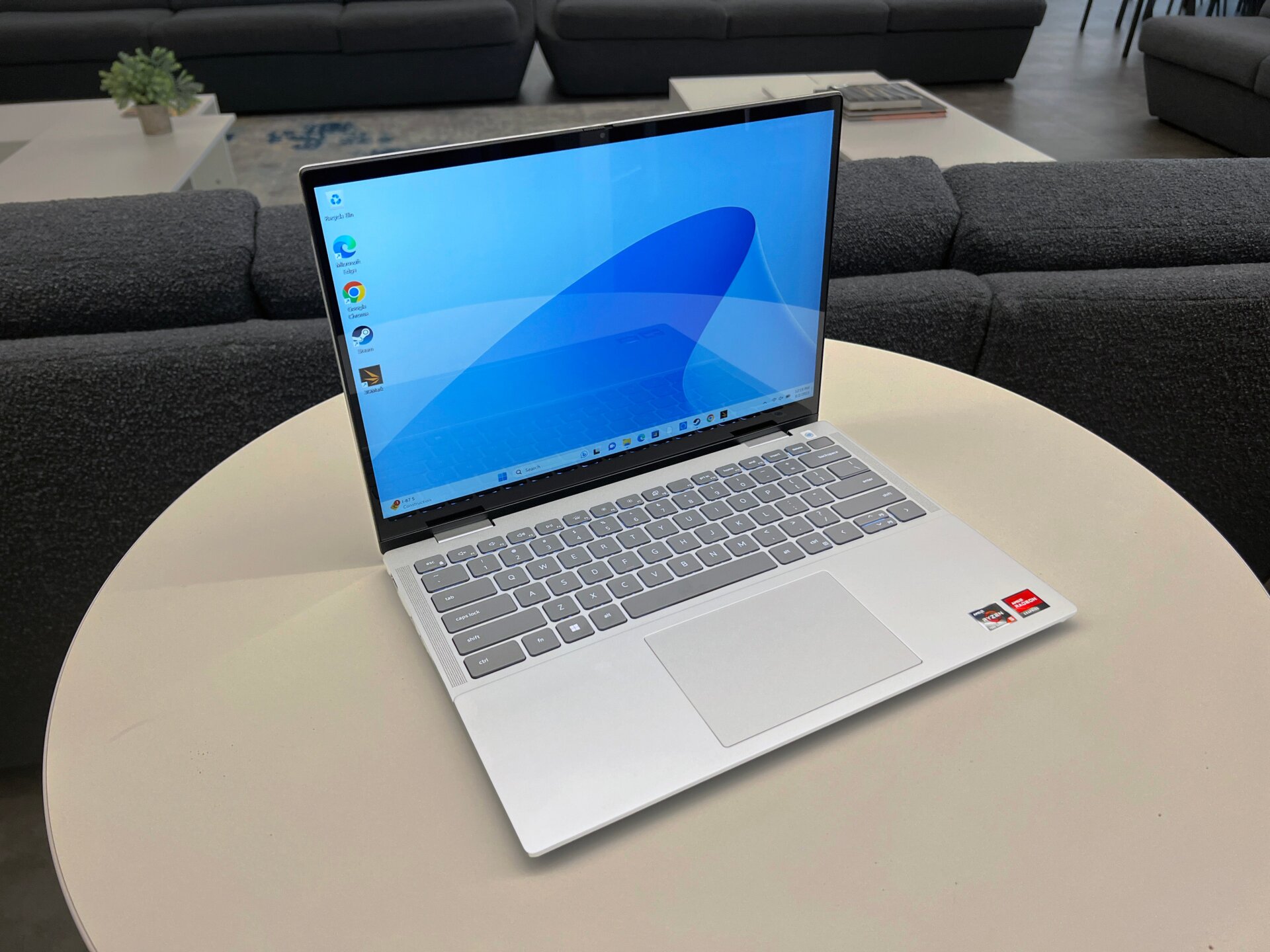Harking back to when I reviewed the 2023 Keychron M3, I can recall that it impressed me with its gamer-centric design and near-to-pro level accuracy. But what really left me with the warm and fuzzies was the fact that it hit shelves for just $49.
Such is the case with the Keychron M6 Wireless, a mouse that can match the latest specs from rivals such as Logitech or Corsair, but since it too costs just $49, it will also keep a few extra $20 notes in your back pocket. Sure, its less-than-perfect build quality is a slight tradeoff for that price, but then again, this mouse has a bucket load of other drool-worthy functionality that more than redeems it as an excellent mouse for causal gaming.
Keychron M6 Wireless design and build
For RPGs and MORPGs, I kind of like my gaming mice to fill up my whole hand — to give me that sense of no-holds-barred control, so it makes sense that a mouse like the Keychron M6 Wireless, with its large, comfortable thumb rest, would be on my radar.
That rest isn’t as plush as some, in that it dispenses with a rubber grip, but it still feels nice and roomy and does a decent job preventing my thumb’s friction on tabletops. Apart from that, the mouse’s most notable design feature is its high sloping top that nicely molds into the center of my palm. That high-top slides down sharply to the right, bestowing my trigger finger with a decent amount of leverage. The mouse’s full dimensions measure 2.96 x 4.82 x 1.96 inches, so it easily accommodates large- to medium-sized hands.
With all three connectivity modes — — 2.4GHz wireless, Bluetooth 5.1, and wired — supported by the M6’s PixArt 3395 sensor, the Keychron M6 Wireless is quite a versatile mouse that you can take anywhere and connect to almost any device…
The M6’s button layout should impress gamers who like a personalized command setup. Apart from the two main clicks, and a four-direction mouse wheel, the M6 also hides two small buttons on the left and a ‘thumb wheel’ above them — similar to the Logitech MX Master 3S. These two buttons are ideally placed for accessing quick peripheral commands — I found them useful for those lesser-used spells in WoW; they made taking care of foes with multiple attacks a lot quicker. The thumb wheel is also a nice feature that synced well into my play style — that is, after I worked out what I could possibly do with it (but more on that later).
The M6’s button configuration also keenly supports its mouse wheel’s dual-mode functionality — there’s a small button located behind the main wheel that switches between a Standard Scroll Mode and Infinite Scroll Mode. On the mouse’s underside, you’ll find yet more buttons: a button to choose connectivity type, a DPI switcher button, and a polling rate button. An additional button lets you switch between up to three different Bluetooth devices when in Bluetooth mode.

Dominic Bayley / IDG
For a mouse with so many features, the Keychron M6 Wireless is also remarkably lightweight. It scores a home run for weighing a mere 2.75 ounces (78 grams). Compare that to other thumb rest bearing mice like the Razer Basilisk V3 (3.56 ounces) and Logitech G502 Lightspeed (4.02 ounces), and consequently, you can see how you could comfortably play for long stints without getting as much hand fatigue.
Now to address the aforementioned build quality issue… Really, it’s not all that noticeable, but the main mouse wheel doesn’t seem to have the stability and firmness I’ve encountered in other mice. I base that on the fact that when I give the device a little shake, the wheel, and possibly some of the other internal components rattle a bit, something that may affect the mouse’s lifespan over time.
Still, with no buckets of cash, or a prestigious ranking on the line from my gaming sessions, for the price being asked, one tiny inconsequential design flaw seems like something I’d be willing to put up with.
Keychron M6 Wireless connectivity
With all three connectivity modes — 2.4GHz wireless, Bluetooth 5.1, and wired — supported by the M6’s PixArt 3395 sensor, the Keychron M6 Wireless is quite a versatile mouse that you can take anywhere and connect to almost any device. That’s all well and good if the mouse’s battery life is up to scratch, and I’m happy to say that it is — you get up to 80 hours runtime, which is quite generous really.
One surprise when I unboxed the device was that as well as the ubiquitous 2.4GHz USB-A Wi-Fi dongle that I usually get with new mice, the box also inlcuded a USB-C dongle. This turned out be super handy when I needed to connect to a laptop that only has USB-C ports — the HP Spectre Foldable being one of them.
The M6 supports a standard polling rate of up to 1,000Hz in Wi-Fi mode, which more and more pro gamers are abandoning in favor of quicker 4K or even 8K HyperPolling rates. That somewhat reduces its effectiveness for esports, but for fast casual gaming 1,000Hz is perfectly fine.
How is the Keychron M6 Wireless’ gaming performance
On balance, the Keychron M6 Wireless is a fast, smooth, right-handed rodent. Its 26,000 DPI sensor tracks movement at a very quick 650 inches per second (IPS) and feels both precise and accurate. The fact that this mouse keeps your trigger finger so elevated means you can milk a little more speed on short, sharp blasts of your main clicks than you otherwise would with a flat-topped symmetrical mouse, which I really liked.
Speaking of the buttons, for the M6’s price, they could possibly be its best value feature. They boast Huano 80M micro switches and feel light and clicky. They’re also rated for a long life of up to 80 million clicks.
The M6’s excellent scroll options also make it a pleasure to use. If you haven’t yet used a mouse with a thumb wheel, it’s a little hard to say how you might take advantage of it, since it largely depends on the games you want to play. For me, I settled on using it to select items from secondary lists in games and to flick through videos when in Windows, for which it proved super useful.
Also convenient was the four-directional main mouse wheel. I review a lot of FPS mice that only give you the two directions (up and down), so I found four clicks a real treat in RTS games, where I could quickly scroll left and right faster through a map, as well as up or down.
The dual scroll-mode functionality, on the other hand, was more of a boon to my work life. I could either use the Standard Scroll Mode to accurately land on pages in documents, or else continuously scroll to the end of a document with the Infinite Scroll functionality, which proved a real timesaver.
What would I change? Only one thing comes to mind for performance: That is, the mouse’s feet aren’t 100 percent PTFE, but rather a combination of PTFE and Teflon. It’s a small point but it does make a difference to one’s play — it means that you don’t quite get as quick a glide over surfaces as mice with 100 percent PTFE — mice like the Razer Basilisk V3, for example. On a stable surface like my neoprene mouse mat that wasn’t very noticeable, but on wood surfaces, that restriction in movement was all too obvious.
Keychron Engine software
Keychron’s Engine software is a straightforward app that lets you assign commands, change polling rates, change DPI settings, choose between liftoff distances, and a whole lot more. With all the excellent scrolling options available to the M6, I was pleased to see that the app also lets you tweak and personalize scrolling settings too, like the scroll speed and scroll direction.
One of the coolest features of Engine is the app’s macros editor, that lets you create, import, and export macros. It features clear subcategories that allow you to distinguish between your macros, their attributes, and easily assign functionality like time delays. It makes the whole process a lot easier than it could be elsewhere, allowing you to focus on how best to win your games.

Dominic Bayley / IDG
Should you buy the Keychron M6 Wireless?
At $49 the Keychron M6 Wireless is priced very well against similar, but more expensive offerings like the $70 Razer Basilisk V3, and $100 Logitech MX Master S3, which means you can keep a few bucks in your pocket to buy another nice bit of hardware — a Raspberry Pi 5 perhaps?
What you get for that price is more than worth it for what you miss out on, especially if you just need a fast, lightweight, no-fuss causal gaming mouse… I mean, the M6’s slightly less-robust build quality is entirely worth living with considering that you get a quick and precise 26,000 DPI sensor, two mouse wheels, and tri-mode connectivity — and all for less than $50. That fact and the fact that the M6 performs extremely well in games, makes it a class act worth putting on your wish list.






